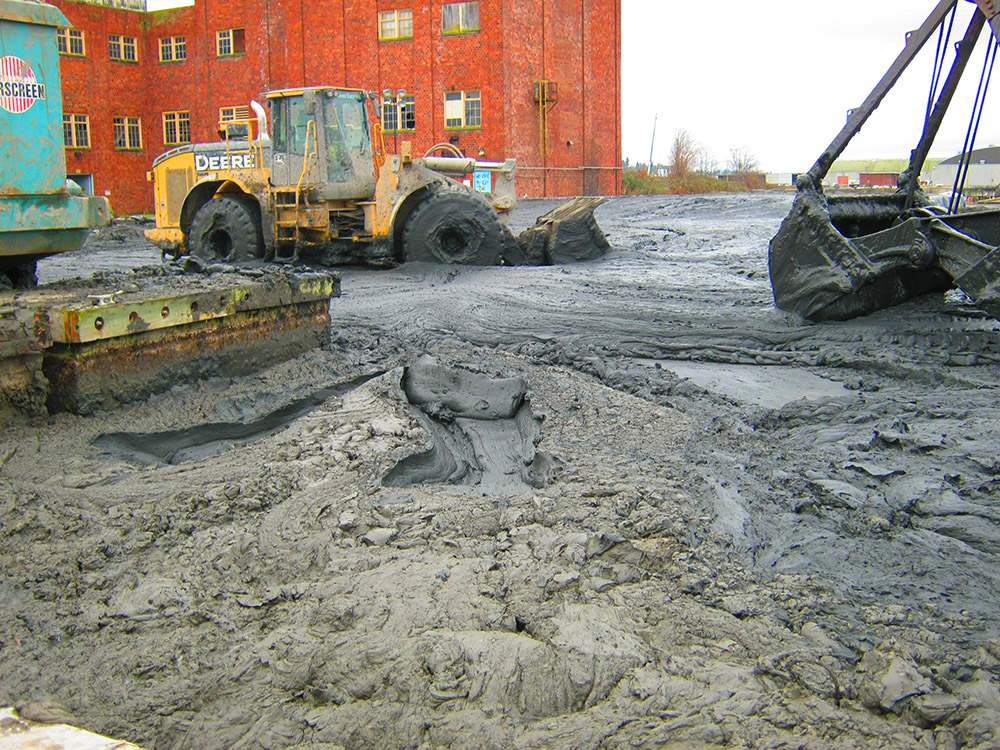Dredged material prior to stabilization. Image courtesy Landau Associates.
What do you do when you have dredge material (i.e., wet muck) to properly dispose of? This is the question that we find ourselves asking on a regular basis as part of the Reid Middleton Waterfront group and one that can sometimes have interesting (and even beneficial) solutions.
For the recent Gate 3, F & G Floats renovation project in Squalicum Harbor for the Port of Bellingham, the area beneath F & G floats and the main entrances to the marina were dredged to provide better access at all tide levels. This resulted in a quantity of dredged material of almost 50,000 cubic yards. Just to give you an idea, 50,000 cubic yards of material is about 6,250 dump truck loads or 715 rail cars full, so we had a lot of sloppy soil to deal with.
Traditionally, dredged material is disposed of at approved open water disposal sites (managed by the Dredge Material Management Office). However, this has been getting more difficult to get material approved as there are more and more contaminants (even at very low levels) that preclude using an open water disposal site (such as the dioxin concentrations in a portion of our site). This is a good thing, since we don’t want to make one problem area into two, but it can create challenges in figuring out what to do with a mini-mountain worth of material.
When we can’t use open water disposal, the solution is usually to haul it (typically by train) to an approved landfill. This is generally the most costly solution (five to 10 times as costly as open water disposal) and takes up a huge portion of landfill space, in addition to all the effort and transportation needed to get it to its final destination.
The third and non-traditional option is “beneficial reuse,” which is what we did on our project. It just so happened that the Port of Bellingham and City of Bellingham jointly own a former industrial site / landfill that is only approximately 1.5 miles from the dredge project site. The overall site is in the beginning stages of being capped and as such there was a need for both fill on the site and at least a temporary capping layer. Working together with the Port and geotechnical engineers at Landau Associates, we were able to come up with a potential solution that could be beneficial to both projects at the same time – use our project dredge materials to stockpile / temporarily cap the majority of the former landfill site.
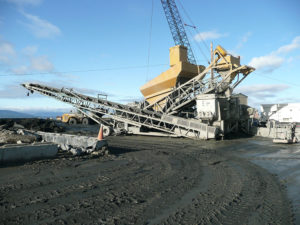
So how was it actually done? Can you take dioxin contaminated, watery, slippery “soil” and turn it into something actually safe and useful? The answer is yes. There were four main steps involved – transporting the dredged material by barge to the processing area, adding a stabilizer (cement in our case) to the material in a regulated manner by use of a pugmill (think of a slow blender on a very large scale), letting the material mellow (react / solidify) for a few days, and then transporting it to the stockpile locations at the beneficial reuse site where it was covered. Special thanks to Landau Associates for all their work with the material to figure out the best course of action and to get the best possible soil-like consistency of the final product.
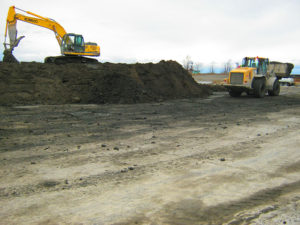
Did it work, and is it really beneficial? We’re happy to say the answers are also yes and yes! So far, the soil is in a condition that is neither too hard (this would be like concrete – bad) or too soft (this would be like quicksand – also bad) and should work very well once the final design for the site is complete, and the soil is re-graded. The majority of the site is now covered with material and an impervious liner (the stockpile is 900-feet long, 125- to 170-feet wide, and 12- to 14-feet tall) and prevents rainwater from flowing through the old landfill site (which is a huge plus – even on a short-term basis).
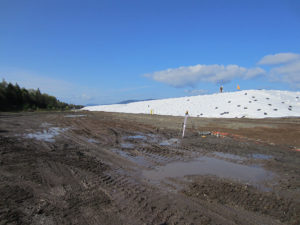
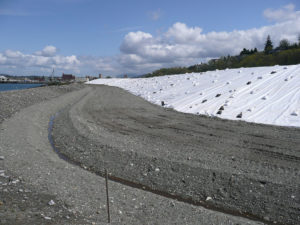
Eventually, the cleanup area where this material (formerly known as muck from the murky waters) was placed will be inspected and signed off as complete by the Department of Ecology and will be turned into a park and green space that everyone can enjoy. There are even future plans for the site to be connected with other City of Bellingham trails and parks! And of course, since it all does come down to dollars (and sense!), the choice to “beneficially reuse” the dredged material only cost about half of what upland disposal would have been.
So there you have it. With careful evaluation, a creative approach to dredge material, and of course at least a few of the right conditions, beneficial reuse of dredged material can be a reality! The challenging aspect is that every situation and project is unique and requires a completely separate solution, (no cookie-cutter projects here) which makes my job that much more interesting.

